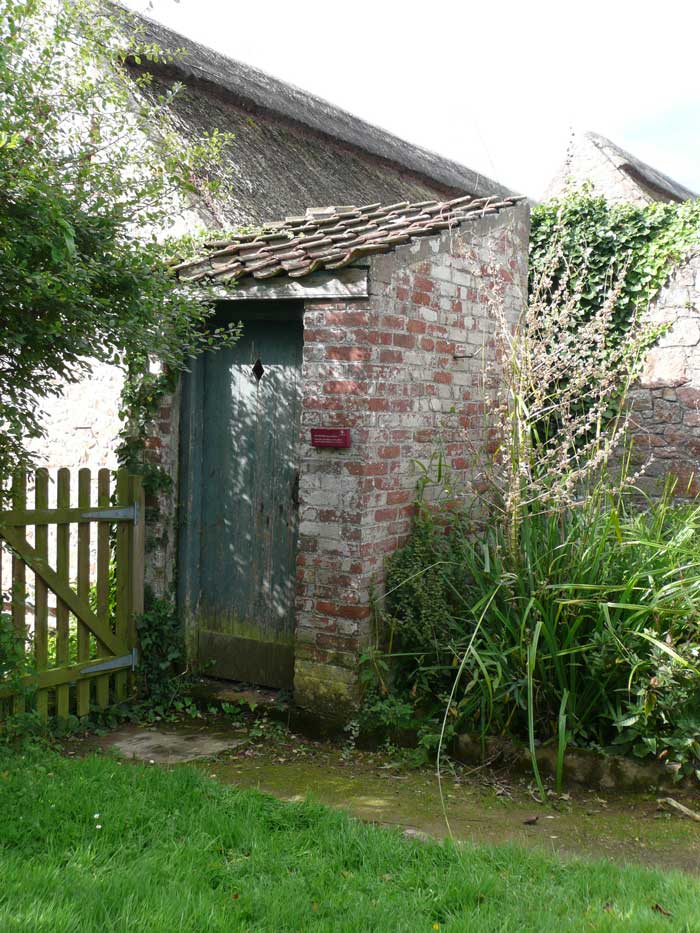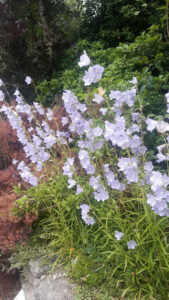Gardening
with Charlie Wilkins
I DON’T BELIEVE IT
Looking back through the memories in my mind, I recall how our children, the six of them, were astonished when told that their parents once lived without telephone, television, or media networking! The very thought of living with such ‘hardship’ was difficult for them to imagine, but to this day, what they never really accepted was we had to do without rolls of toilet paper! When asked what was used the standard reply was; squares of the Cork Examiner pierced onto a length of stiff wire hung from the water cistern overhead. And in rural settings, you sometimes had to use whatever came to hand!
Their grandmother, who spent much of her youth on a small farm in East Cork, remembers having to trudge outside nightly to use ‘the privy’ before retiring to bed. In those days, whether in town or country, in gardens modest and grandiose, a privy was common to all, and many were extraordinarily decorative as well as functional.
But on frosty nights the cold which was usually content to remain outside the timber and brick structure, crept inside as if to shelter from itself. And through the small porthole cut into the door, came wind, rain, and farmyard dust and odours. In the depths of winter, the wooden seat would be caked with frost while freezing draughts would blow up from the hole beneath! As a young boy, I had that experience on my visits and I must admit that it was very character forming!
Situated deep among the varied outhouses and beside a large ash the view through that porthole was away from the house and out towards Midleton golf links (now Tesco). Although simple in construction and whitewashed inside and out it was to all who used it, a romantic chamber. Above all, it was exclusively yours for the duration providing not only brain-freezing, skin-tingling solitude, but ‘relief’ in one or two ways and a privacy one fiercely guarded.
Improvements in plumbing and the advent of indoor water closets eventually meant that, in large houses at least, the garden privy soon became the sole preserve of the gardener and his staff. Those who worked outdoors found the privy to be places of quiet mesmeric potency and nowhere was this more evident than in the ‘thunder-boxes’ at the Lost Gardens of Heligan! Here, the gardeners-using the same pencils they used to write plant labels- wrote their names and graffiti on the wall of the loo. When one went away to fight in the First World War a cross was put next to his name. When they were officially declared missing or dead, a second cross was added. All this came to light during the garden’s restoration, when a fluid used to uncover the names on faded plant labels was applied to the faint markings on the toilet wall.
Do many outdoor garden privies remain today? Who knows, but very few I suspect. It would be reasonable to assume that most of these once essential domestic outbuildings have been stripped of their distinctive character and are now used as just another garden shed to house the lawn mower, tools, and cover for soft furnishings when rain threatens. If, as I continually suggest, a garden is a place of refuge, then those privies must surely have been a haven of peace and quiet. Have we unknowingly destroyed a period of garden history?

IN THE SPRING GARDEN
THE SHOW-STOPPERS come April are the Crown imperials, Fritillaria imperialis. This tall member of the fritillary family boasts a tuft of lush, pineapple-like green leaves, and a whorl of bell-shaped orange or yellow flowers sitting on an impressive five-foot stem. If flowering has failed you in the past it’s because you may have failed in one or other of its needs (feeding with a high potash food or growing the bulbs in hungry, dry soil. All fritillaries enjoy moisture and Cork has plenty when needed! Feed them as soon as the shoots first become visible. Mine have yet to break ground. Use a general fertiliser or better still, apply that high potash feed as a liquid, every seven to ten days. If they don’t flower this year, they certainly will next spring. Ideally, Crown imperials need a deep, rich, well-drained-preferably alkaline-loam soil, and a warm, sunny position. Give water regularly when blooming.
LILY BEETLE. Be advised that lily beetles attack fritillaries long before their exotic favourites push into the sunlight and fresh air. Watch for them in May as they emerge from hibernation. They look very much like ladybirds but minus the black spots. Remove by hand, crush, or drop into salted water.
LAWN REPAIRS. Repair lawns torn up by jays, crows, rooks and starlings in their quest for pests such as chafer grubs and leatherjackets. Loose tufts of grass should be raked off and the area re-sown. Larger areas may need stripping and re-turfing. Turves are available at many of the larger DIY multiples (B&Q) normally based in the UK but now in every large town. Sold in square yard rolls, the quality is good and the price very reasonable. After the work is completed, keep the area well-watered.
TAKE A WALK. Covid continues to destroy our lifestyle but if you possibly can, take a walk into any deciduous wood over the improving days ahead (Fota is good). Spring is showing along the paths and in the margins of the tracks. There is nothing overgrown or jungle-like about it (yet) and the earliest flowers appear like a suggestion of abundance. Observe the trees for only the leaves in the lower branches will be out. The oaks and ash high above them remain reticent, afraid perhaps of more biting winds and late frosts. When it comes to leafiness and generosity of growth notice the hazel and hornbeam, the honeysuckle and elder! These are more than willing to readily sprout. All this burgeoning is what makes springtime woods so beautiful; that greenness that glows like a hologram within them, enclosed and shaded by the still-woody net of the leafless larger trees. Take it all, and savour all, for by July they will be tattered and tired and prematurely aged looking.
BLUEBELLS. Dig out bluebells in ‘wrong’ places before they seed. Mine are well up by now. It will take time to remove them but if you do so you will restrict their spread. Plant the bulbs elsewhere or give them to a neighbour. My brother Noel lives in Co. Galway so mine are already on the way to a more appreciative home.







